Milan Travel Guide
Milan is about fashion, food and all things glamorous, proudly presenting the modern face of Italy and luring tourists with its sleek cityscape and cultural riches. Travellers visit to Milan to discover the 'alternative' Italy, for the city embodies everything that is chic and sophisticated in Italian culture, far removed from quaint Tuscan villages or warbling gondoliers. Milan is the home of haute couture and haute cuisine, world-class shopping, supreme opera, elegant skyscrapers, tasteful galleries and museums, and spacious piazzas. The proud denizens of this city seem to do everything with style and they know how to have fun: Milan has an energetic nightlife and a sophisticated clubbing scene.
Fashion fundis, shopaholics, opera-lovers and anyone who enjoys the finer things in life (and can afford to pay for them) will revel in a holiday in Milan. This is not to say there are no archaeological or historical treasures in the city; sightseers searching out the ancient and historic will find plenty of diversions. Art-lovers are drawn to Milan to see the masterpieces stored in its leading galleries and the piece de resistance, da Vinci's The Last Supper fresco, is in the refectory of the Santa Maria delle Grazie.
Best time to visit Milan
Mid-summer (July and August) is stiflingly hot and humid in the city, and most locals head for the lakes at this time of year. The best time to holiday in Milan is in early summer (May to June), or early autumn (September), when the weather is warm and sunny. Winters are very chilly, wet and foggy.
What to see in Milan
-Marvel at the breathtaking Duomo di Milano, the world's largest Gothic cathedral.
-See Leonardo da Vinci's legendary designs and inventions in the National Science and Technology Museum.
-Seek out the peaceful beauty of the old botanical gardens at Orto Botanico di Brera.
-Gaze upon da Vinci's The Last Supper in the UNESCO-listed Santa Maria delle Grazie.
What to do in Milan
-Visit the fascinating Basilica of Sant'Ambrogio, one of the oldest churches in Milan.
-Explore the vast Sforzesco Castle, one of the city's most iconic monuments.
-Catch an opera at the world-famous La Scala Theatre.
-Wander through one of Italy's finest art collections at the Pinacoteca di Brera.
Beyond Milan
There are many enviable excursions from Milan: the stunning scenic villages of Cinque Terre are within easy reach; the glamorous playground of Portofino attracts many day-trippers; and the beautiful Dolomite Mountains beckon to outdoor enthusiasts. Venice and Genoa are also close enough to encourage quick visits.
Getting there
Flights to Milan most commonly land either at Milan Linate International Airport, five miles (8km) southeast of central Milan, or Milan Malpensa International Airport, located 28 miles (45km) northwest of Milan. Despite its distance from the city Milan Malpensa is one of the busiest airports in Europe and buses, trains and taxis ferry passengers into the city.
Did you know?
-Milan is considered one of the most expensive cities in the world.
-The famous Milan Cathedral took nearly four centuries to complete.
-Milan has been ruled by Celts, Romans, Goths, Lombards, Spaniards, and Austrians in its long history.
Things to do in Milan
Milan's attractions extend far beyond its fame as a fashion capital. There are many museums, cathedrals and galleries to visit, as well as the Milan Aquarium and the Orto Botanico di Brera gardens.
The Galleria Vittorio Emanuele II arcade is a popular place to relax over coffee, while La Scala is a world-famous opera house worth visiting, with a great museum for those who can't get their hands on tickets. The 15th-century Sforzesco Castle's Museum of Historic Art is also a major Milan attraction, as are the Gallery of Modern Art and the Pinacoteca di Brera, exhibiting collections of medieval and Renaissance art, including the work of Napoleon.
The Santa Maria delle Grazie is home to Leonardo da Vinci's famous painting, The Last Supper, and the Leonardo da Vinci National Science & Technology Museum has a collection of his designs for war machines and architecture. Duomo, which is the world's largest Gothic cathedral, and the Basilica of Sant'Ambrogio, built in the 1st century, are landmark Milan attractions.
The Naviglio Grande is the oldest canal in Milan, built in the 12th century. It stretches between the Darsena of Porta Ticinese and the bridge of Via Valenza, itself particularly drenched in old-world charm. Along the canal's banks in this section, about 400 vendors gather on the last Sunday of every month to set up stalls selling a fascinating selection of furniture, clocks and porcelain, coupled with silver, jewellery and numerous collector's items, from comics to walking sticks. On market day, the adjacent shops, bars and art studios all remain open, adding to the pleasure of browsing.
The best time for sightseeing in Milan is spring, early summer, or autumn, when the weather is warm and sunny.
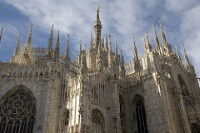
Duomo di Milano (Milan Cathedral)
One of the world's largest Gothic cathedrals, the Duomo presides over the Milanese Piazza bearing its name. Construction began in 1386 and continued sporadically until Napoleon ordered its completion in 1809. Its lengthy creation bestowed on it 3,400 statues, 135 spires and 96 gargoyles, as well as a colourful mosaic of stained glass windows.
The 16th-century marble tomb of Giacomo de Medici lies in the southern transept, and lying buried at its heart is St Charles Borromeo, the cathedral's most important benefactor. Every year in May and September, a nail from the cross of Christ is displayed to worshippers, retrieved from its resting-place by the bishop who is hoisted to the nivola to reach it. Across the piazza are the Museo del Duomo, displaying the treasures from the cathedral, and the Museo d'Arte Contemporanea, showcasing Italian Futurist art.
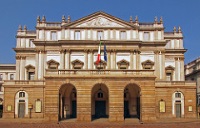
La Scala Opera
This world-famous opera house rests on the site of the Church of Santa Maria alla Scala. For opera fanatics. seeing a performance at La Scala is the experience of a lifetime. The La Scala Museum is also worth a visit, as it provides a wealth of mementos from the opera house dedicated to the nation's beloved composers and performers, such as Rossini, Puccini and Toscanini.
Two halls are devoted to Verdi alone, containing memorabilia such as the spinet on which he learned to play, hand-written scores and the baton given to him after the momentous reception of his best-loved work, Aida. There are also exhibitions featuring some of the elaborate costumes worn in the theatre over the years, and mementoes from the plays and performances.
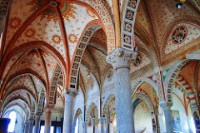
Santa Maria delle Grazie
The church and convent of Santa Maria delle Grazie is a UNESCO World Heritage Site and one of the most popular attractions in Milan. Located in the refectory next to the church is Leonardo's famous painting The Last Supper and, although the church is an attraction in its own right, it's this iconic masterpiece that draws so many admirers. Controversy has erupted over the removal of layers of corrective over-painting completed in the 18th and 19th-centuries. The painting has endured more than hot debate, managing to escape the bombing during WWII that destroyed the roof of the refectory.
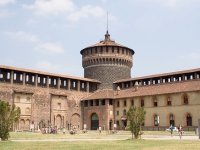
Museum of Historic Art of the Sforzesco Castle
The gargantuan 15th-century Sforzesco Castle is one of Milan's foremost monuments, conveniently located in the centre of the city. It contains three museums, the most notable of which is the Museum of Historic Art. Within its collection is the famous Pieta Rondanini, Michelangelo's final sculpture, as well as paintings by Mantegna, Bellini, da Vinci and Fra Filippo Lippi. The two other museums within the Castle's ramparts are the Museum of Applied Arts and the Archaeological Museum, which offer unusual exhibitions showcasing musical instruments, Egyptian art and other unexpected things. The castle grounds are big and lovely to stroll, with no entry fee, meaning it's a great place to come for some fresh air.
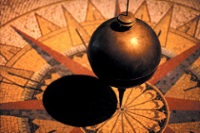
Leonardo da Vinci National Science & Technology Museum
This remarkable museum is a popular tourist attraction and a fitting tribute to one of history's greatest minds. Within the Leonardo Gallery of the museum is a collection of da Vinci's ingenious designs, detailing everything from plans for war machines to architectural visions. Applied physics is the focus of another room, in keeping with the museum's tribute to the history of science, and there are also departments for energy, communication and transport. There are loads of interactive exhibits and scientific experiments to actively participate in.
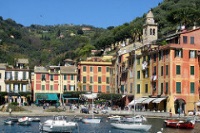
Portofino
Nestled in a sheltered inlet within the stretch of the Italian Mediterranean is the coastal resort village of Portofino, famous for its picturesque harbour. It has long been the playground for the rich and famous, attracting the likes of Sophia Loren, Elizabeth Taylor and Grace Kelly. The scenic surrounds can be explored from the outlying nature reserve, which is graced with cypress and olive slopes. Travellers can set off from here on a 90-minute trek to San Fruttuoso, or a two-and-a-half hour hike to Santa Margherita. Other sights around Portofino include its castle and the lighthouse, with its breathtaking view of the coastline. The most famous beach in the area is the beautiful Paraggi Beach, with nearby alternatives including Camogli, Chiavari, Lavagna, and Sestri Levante.
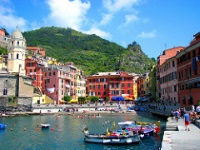
Cinque Terre
Strung along just over 11 miles (18km) of rugged cliffs between Levanto and La Spezia, the five fishing villages of the UNESCO-listed Cinque Terre nestle precariously on the cliffs. Overlooking the azure ocean of the Italian Riviera, it's a picture-perfect dream of sparkling clear waters and dramatic vistas, contained within the tranquil embrace of the villages that are connected to one another by a scenic pathway that curves through the hillside among olive groves and vineyards. Monterosso is the largest and is recognisable through the huge statues carved into the shore's rocks. The village of Riomaggiore is identified through the myriad fishing boats festooning its shores, linked by the 'lovers lane' to the charming town of Manarola. Corniglia perches on the mountainside and is accessed through a steep climb, while Vernazza's promenade and piazza have beautiful sea vistas.
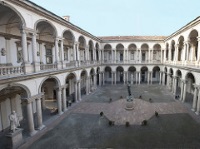
Pinacoteca di Brera
Housing one of Italy's finest collections of medieval and Renaissance art, the 17th-century Pinacoteca di Brera is by far the best collection of northern Italian paintings. Many of the masterpieces here were secured by Napoleon, who used the Palazzo as a storeroom for all the art he confiscated from public and private holdings. Three of Italy's great masterpieces are found here, namely Andrea Mantegna's Dead Christ, Raphael's Betrothal of the Virgin and Piero della Francesca's Madonna with Saints. The collection also includes notable works by Caravaggio. One of Milan's most popular tourist attractions, the Pinacoteca di Brera houses mostly religious art and will impress even the uninitiated with its vast collection and the stunning building.
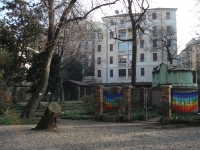
Orto Botanico di Brera
The Orto Botanico di Brera is a botanical garden located behind the Pinacoteca di Brera in the centre of Milan. The garden has greenhouses from the 19th century that are now used by the Academy of Fine Arts, as well as flower beds and elliptical ponds from the 18th century. Orto Botanico di Brera is home to one of the oldest ginkgo biloba trees in Europe, and various other mature botanical specimens can be found within the grounds. The Orto Botanico di Brera is small by botanical garden standards but is well worth visiting for its historical charm and the originality of the mixture of art and nature that often results from the influence of the Academy of Fine Arts.
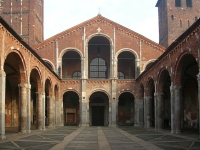
Basilica of Sant'Ambrogio
The Basilica of Sant'Ambrogio is one of the oldest churches in Milan, built by Bishop Ambrose between 379 and 386 AD. Located in an area where numerous martyrs of the Roman persecutions were buried, it was originally called Basilica Martyrum. In 1099, the church was rebuilt in the Romanesque architectural style but the basilica plan of the original edifice was maintained, including a portico with elegant arches in the front entrance. Of the two bell towers, the left and higher tower dates back to 1144 AD. Inside there is an apse mosaic from the early 13th century portraying the Christ Pantokrator, an inspirational religious and artistic artefact. As well as the tomb of Emperor Louis II, there are also mummified bishops in its chapels.
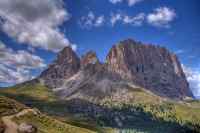
Dolomite Mountains
The beautiful Dolomite Mountains and Renon Plateau are popular excursions from Milan, with quaint mountain villages such as Bolzano and Collalbo completing the package. The Dolomite mountains are famously picturesque and are listed as a UNESCO World Heritage Site, while interesting and unusual rock formations dot the Renon Plateau. Hiking is naturally a popular activity in the region and photographers will be in their element. Stunning panoramic views of the Dolomite landscape await those taking the Renon Cable Car up the mountain to Bolzano or hopping aboard the train to Collalbo. Bolzano is an interesting town with a distinctly German atmosphere and Collalbo is a charming village perched high on the plateau and surrounded by pristine countryside.
Eating Out
Milan is almost as famous for its cuisine as for its fashion scene, and foodies will be in paradise in this city. Milan's restaurants serve everything from traditional local fare to exotic international cuisine, though the city is known to be less keen on pasta than the rest of Italy, instead focusing more on rice-based dishes. Classic Italian dishes include the usual pastas and pizzas, as well as salumi friulani (cured meats), risottos and excellent seafood.
Many traditional Milanese restaurants and trattorias (casual Italian eateries) can be found in the Brera, Navigli and city-centre. For good pizza when eating out in Milan, travellers should try one of the restaurants on Via Palermo. Porta Venezia, Via Victor Hugo and Via Manzoni have more international options, serving Mediterranean, Asian and fusion cuisine.
While there will always be a number of Milan restaurants open to diners, it's best to call ahead for reservations if travellers are visiting one of the more popular restaurants. Some establishments add a service charge to the bill and, if not, a 10 percent gratuity is an acceptable tip. Dining out in Milan can be expensive, but it's extremely rewarding to the palette.
Shopping
Shopping in Milan is an unparalleled experience. Milan is not just the epitome of fashion paradise, it is considered the fashion capital of the world. This city boasts the most prestigious boutiques and showrooms on earth. In the heart of Milan's shopping area are the streets of the Fashion Quadrilatero (Via Montenapoleone, Via della Spiga and Via Sant'Andrea), where elegance and luxury can be bought, though at a price.
On Via Montenapoleone shoppers will find Gucci, Versace, Valentino and Cartier, to name just a few brands. Chanel, Armani and Moschino are available on Via Sant'Andrea, while Via della Spiga is home to D&G, Prada and Bulgari. After shopping for all these name brands, visitors might like to stop on Via Manzoni at Robert de Niro's restaurant, Nobu, for a breather.
Other fantastic shopping stops include Vittorio Emanuele and Corso Vercelli, while Torino and Ticinese house some avant-garde goods and Paolo Sarpi has an eclectic chinatown feel. For more affordable purchases, travellers should visit Corso Vittorio Emanuele, Corso Buenos Aires, Via Torino and Corso di Porta Ticinese. On these streets there are shops such as H&M, Zara, Timberland and Diesel. Local markets include Fiera di Senigallia (held on Saturday mornings at Viale d'Annunzio), and Mercatone del Naviglio Grande, at the Alzaia Naviglio Grande, which takes place on the last Sunday of each month.
Nightlife
Milan has perhaps the most talked-about nightlife in Italy, partly because it's got a young and trendy crowd but also because of its high-profile events calendar. The fashionable nightlife in Milan radiates primarily from the Brera Gallery and Navigli areas. Centri Sociali is home to an alternative, less expensive entertainment scene. The city offers visitors a vast selection of vibrant bars, restaurants and nightclubs, as well as live music performances.
The nightlife kicks off early in Milan, by Italian standards, with Happy Hour starting at about 6pm. The evening drinking session, called the apertivito, is an important social opportunity in Milan, a chance to meet and greet and fashionably mingle. Dance venues usually only get going at about 11pm, with nightclubs closing at about 4am.
Although there are a handful of perennial favourites, clubs are likely to change names and owners fairly frequently in Milan. But it's never difficult to find nighttime fun in this glamorous city. Those who want more cultured entertainment will be spoilt by the opera and theatre scene of Milan.
Getting Around
ATM (Azienda Trasporti Milanesi) operates Milan's metro, bus, tram and trolley services, which have the advantage of being integrated. Tickets, available from shops displaying the ATM logo, are validated on-board and then have a time limit of 75 minutes travel on any of the transport options, or one ride on the metro. The city's metro is particularly inexpensive and user-friendly. Linea 1 covers the most important tourist areas near the Duomo. Taxis are freely available but have to be hired at marked stands. Passengers should expect extra charges for luggage, night fares or Sunday travel. The historic area around the cathedral is good for pedestrians and a number of attractions can be reached on foot.
Milan Climate and Weather
The climate of Milan is Mediterranean, but like any large urban metropolis, buildings and human activity affect the local micro-climate. In the case of Milan this makes the weather rather more extreme. Summers can be hot and humid, with temperatures rising above 86F (30C) during August. The mountains behind the city protect Milan somewhat from the severity of winter, but the weather is very chilly with temperatures occasionally dropping below freezing. Winter also brings rain showers and heavy fog. Spring (March to May) and early summer (June) are the best time to visit Milan weather-wise, although autumn (September to November) is also pleasant. In late summer, particularly August, it gets uncomfortably hot and many locals depart for their summer break, leaving some restaurants and hotels closed. Winter is a bit cold for most tourists but Milan's attractions are world-class during any season.
Italy travel info
Electricity
Electrical current in Italy is 230 volts, 50Hz. A variety of plugs are in use, including the European-style two-pin plug.
Language
The official language of Italy is Italian. English is understood in the larger cities but not in the more remote parts of the country.
Money
The euro (EUR) is the official currency, which is divided into 100 cents. Those arriving in Italy with foreign currency can obtain euros through any bank, ATM or bureau de change. ATMs are widespread; credit cards are accepted in upmarket establishments and shops around the cities. Banks are closed on weekends but tend to have better rates than foreign exchange houses.
Tipping
Tipping is customary in Italy and 10 to 15 percent of the bill is acceptable in restaurants, unless a 15 percent service charge has already been added to the bill. Hotels add a service charge of 15 to 18 percent, but it is customary to tip the service staff extra. Italians rarely tip taxi drivers but a 5 to 10 percent tip is always appreciated.
Health
There are no specific health risks associated with travel to Italy and visitors should be able to travel without special vaccinations and medications. Medical facilities in Italy are good but travel insurance is still recommended for non-EU citizens, as medical attention can be expensive. EU citizens can make use of Italy's health services provided they have a European Health Insurance Card (EHIC), with UK citizens using their Global Health Insurance Card (GHIC). The GHIC replaced the EHIC for UK citizens and allows UK citizens access to state healthcare during visits to the EU. The GHIC is not valid in Norway, Iceland, Liechtenstein or Switzerland, nor is it an alternative to travel insurance. Although it should be possible to get most medication in Italy, travel authorities always suggest taking any prescribed medication in its original packaging with a signed and dated letter from a doctor.
Safety
Tourists are vulnerable to pickpocketing in the bigger cities, particularly on public transport, in crowded areas and around tourist sites. It's advisable to be careful when carrying large amounts of cash and valuables. Travellers should be particularly careful around Termini, which is the main train station in Rome. Visitors should be wary of groups of children, some of whom will distract attention while the others try to steal what they can. Strikes by transport workers take place regularly throughout Italy and delays are possible.
Local customs
In Italy, it's an offence to sit on steps and in courtyards near public buildings, including the main churches in Florence; eating and drinking in the vicinity should also be avoided. Shorts, vests or any other immodest clothing should not be worn inside churches.
Doing business
Italians can be very formal and old fashioned, but are also warm and welcoming. Face to face communication is best and often a third party introduction can speed initial negotiations. Business attire is formal and stylish, and handshakes are the norm, with first impressions counting a lot in Italy. Business cards are used. Visiting business people should also expect plenty of gesticulating, interruptions or people talking over each other. Unfortunately the bureaucracy in Italy can slow down deal-making. Business hours are usually 9am to 5pm Monday to Friday, but can vary according to season and region.
Duty free
Travellers over 17 years from non-EU countries do not have to pay duty on 200 cigarettes, 50 cigars or 250g of tobacco. Nor do they have to pay duty on 4 litres of wine, 16 lires of beer or 1 litre of spirits over 22 percent volume, or 2 litres of alcoholic beverages less than 22 percent volume. Other goods up to the value of €430 are also permitted (reduced to €175 for children under 15).
Travellers from EU countries travelling within the EU are limited to 110 litres of beer, 90 litres of wine, 10 litres of fortified wine, 10 litres of spirits and 1kg of tobacco, 800 cigarettes, 200 cigars or 400 cigarellos. Prohibited items include narcotic drugs, medicinal products, arms and weapons, explosives and protected animal and plant species.
Communications
The international access code for Italy is +39. Hotels, cafes and restaurants offering free WiFi are widely available; as international roaming costs can be high, purchasing a local prepaid SIM card can be a cheaper option.
Passport & Visa
The borderless region known as the Schengen Area includes the following countries: Austria, Belgium, Czech Republic, Denmark, Estonia, Finland, France, Germany, Greece, Hungary, Iceland, Italy, Latvia, Lithuania, Luxembourg, Malta, The Netherlands, Norway, Poland, Portugal, Slovakia, Slovenia, Spain, Sweden and Switzerland. All these countries issue a standard Schengen visa that has a multiple entry option, and which allows the holder to travel freely within the borders of all the aforementioned countries. All foreign passengers to Italy must also hold visible proof of financial means to support themselves while in the country, return or onward tickets, and the necessary travel documentation for their next destination. Visitors may be refused entry, either for public security, tranquillity, order or health reasons. Extensions of stay in Italy are possible by applying to local authorities. It is highly recommended that travellers' passport have at least six months' validity remaining after the intended date of departure from their travel destination. Immigration officials often apply different rules to those stated by travel agents and official sources.
Entry requirements
US citizens must have a passport that is valid for at least three months beyond their intended stay in Italy. No visa is required for stays of up to 90 days within a 180 day period.
UK citizens must have a passport that is valid for at least three months beyond their intended stay in Italy. No visa is required for stays of up to 90 days within a 180 day period.
Canadian citizens must have a passport that is valid for at least three months beyond their intended stay in Italy. No visa is required for stays of up to 90 days within a 180 day period.
Australian citizens must have a passport that is valid for three months beyond their intended stay in Italy. No visa is required for stays of up to 90 days within a 180 day period.
South African citizens must have a passport that is valid for three months beyond their intended stay, and a valid Schengen visa, to enter Italy.
Irish citizens must have a passport that is valid upon their arrival in Italy. No visa is required.
New Zealand citizens must have a passports valid for three months beyond period of intended stay in Italy. No visa is required for stays of up to 90 days within a 180 day period.
Useful contacts
www.enit.it
112 (General Emergencies), 113 (Police), 118 (Ambulance)Embassies / consulates in other countries
Italian Embassy, Washington DC, United States: +1 202 612 4400.
Italian Embassy, London, United Kingdom: +44 (0)20 7312 2200.
Italian Embassy, Ottawa, Canada: +1 613 232 2401.
Italian Embassy, Canberra, Australia: +61 (0)2 6273 3333.
Italian Embassy, Pretoria, South Africa: +27 (0)12 423 000.
Italian Embassy, Dublin, Ireland: +353 (0)1 660 1744.
Italian Embassy, Wellington, New Zealand: +64 (0)4 473 5339.
Embassies / consulates in Italy
United States Embassy, Rome: +39 06 46741.
British Embassy, Rome: +39 06 4220 0001/ 4220.
Canadian Embassy, Rome: +39 06 85444 2911.
Australian Embassy, Rome: +39 06 852 721.
South African Embassy, Rome: +39 06 852 541.
Irish Embassy, Rome: +39 06 585 2381.
New Zealand Embassy, Rome: +39 06 853 7501.



